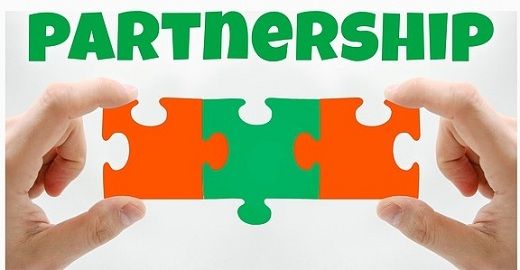How Do Personal Loans Work?
[/size][/color]

Most loans are fairly self-explanatory. Usually what they help you finance is right in the name: Home loans are for mortgages when you purchase a home, car loans are for that new ride in the driveway, and student loans are for your education.
But what about other types of loans that aren’t so obvious? If you’ve heard of personal loans, you may wonder, “How do personal loans work?”
It’s not immediately clear what kind of loan this is, and even less obvious is who should use these loans and when.
What is a personal loan?If you’re wondering “How do personal loans work?” know that they are fairly simple and straightforward. When you apply and receive approval for the loan, you’ll receive the amount of money you requested to borrow in a lump sum.
You pay back that money in installments. The timeframe of those payments is determined by the specific terms of your loan.
The interest rate on your loan is determined by your credit score. The better your score, the more favorable your interest rate will be. A great rate will save you money when you repay the debt because you’ll be required to pay less on interest.
Be sure to look for fixed-rate loans to ensure the interest rate you receive won’t change as you pay off the balance. These details should be in the fine print and included in the terms of your loan. Read all the details and fully understand the loan before signing any paperwork.
If you have questions, don’t be afraid to ask the loan officer for more information on the specific loan you’re looking to apply for.
A few questions you should ask about your personal loan should include:
What is the interest rate?
What is the APR?
What is the origination fee?
What is the loan term?
Is the interest rate fixed?
Is anything else included in this loan?
Will I have to pay a fee for prepaying the balance on the loan?
What is the late fee for payments?
It’s important to gather all the information you need to feel comfortable about your decision, so don’t be afraid to ask as many questions as you’d like before signing on the dotted line.
When should you avoid a personal loan?Before we explore when personal loans do make sense, let’s eliminate a couple scenarios.
Unnecessary spendingYou should not use personal loans for things like discretionary purchases or splurges. Don’t borrow money to buy things you really want but don’t actually need.
Instead, create a savings plan and pay for your discretionary spending in cash. Anytime you can save up money for a purchase, do so instead of taking out a personal loan to fund the expense.
Rebuilding your creditWhile balancing different types of lines of credit can help boost your score, there’s no need to take out a new loan if you still have old debt or balances you’re working to repay. It’s not worth the money you’ll spend in interest.
If you want to boost your credit score, make your current payments on time and in full consistently over time. Don’t open or close multiple credit card accounts at once either.
Big one-off purchasesUsing a personal loan to fund a big spend may not be the right way to go. Avoid borrowing money to pay for things like weddings, vacations, or pricey purchases.
While these events and items can be expensive and take you a long time to save up for, it’s well worth it. Paying in cash means you only cover the actual purchase price and you’re not risking any of your financial security when you save up first.
When does a personal loan make sense?A personal loan can provide borrowers with a lot of advantages. They usually come with lower interest rates than credit cards, which makes borrowing more affordable. However, personal loans do usually carry higher interest rates than secured loans, so always be sure to check the APR.
Ultimately, personal loans are personal because the funds can be used at your discretion.
You can also use a personal loan as a debt consolidation tool. If you have a lot of student loans that you struggle to manage — or even credit card debt on a high-interest card — check out your personal loan options. It may be worth consolidating your debts if it would save you money by providing a lower interest rate.
When you choose to get a personal loan, plan to use that borrowed money responsibly. Don’t borrow more than you can afford so you can avoid paying unnecessary interest. And create a repayment plan ahead of time so you know you can stick to it.
Are there any issues to be aware of?Now that you know the answer to ”How do personal loans work?” there are some red flags you need to watch out for.
Avoid personal loans that charge fees for prepayment. While it’s nice to have enough time to repay the money you borrowed, you may want to pay your debt off faster to avoid paying more in interest. You’ll lose the savings benefit if your loan servicers charges you for paying ahead of schedule.
If a loan provider requires you to purchase any other kind of product with the personal loan, such as insurance, look to borrow through another company. This isn’t necessary and will only cost you more money.
Personal loans are useful tools, but use with cautionPersonal loans can provide you with a cheaper financing option than credit cards. They may also be a good way to consolidate your student debt if you can secure a good interest rate.
Best of all, personal loans require no collateral, and you have a lot of freedom and flexibility in how you use the funds.
However, remember that if you do take out a loan, you put yourself in debt until you repay the balance. That could jeopardize your financial security if a financial emergency comes up while you still carry the loan.
Before borrowing money this way, make sure you truly need to take out a loan at all. If so, be responsible. Borrow only what you need and know ahead of time how you’ll pay back that money.
Interested in a personal loan?
Here are the top personal loan lenders of 2018!
LENDER RATES (APR) LOAN AMOUNT
1 Includes AutoPay discount. Important Disclosures for SoFi.
2 Important Disclosures for Citizens Bank.
* Important Disclosures for Upgrade Bank
7.73% - 29.99% $1,000 - $50,000
on SLH's secure site
5.83% - 14.74%1 $5,000 - $100,000
on SLH's secure site
Upgrade
5.96% - 35.97%* $1,000 - $50,000
8.00% - 25.00% $5,000 - $35,000
on SLH's secure site
FreedomPlus
4.99% - 29.99% $10,000 - $35,000
Citizens Bank
4.99% - 16.24%2 $5,000 - $50,000
LendingPoint
15.49% - 34.49% $2,000 - $25,000
Lendingclub
5.99% - 35.89% $1,000 - $40,000
Earnest
5.49% - 18.24% $5,000 - $75,000
Avant
9.95% - 35.99% $2,000 - $35,000
Source:
https://studentloanhero.com/featured/how-do-personal-loans-work/






